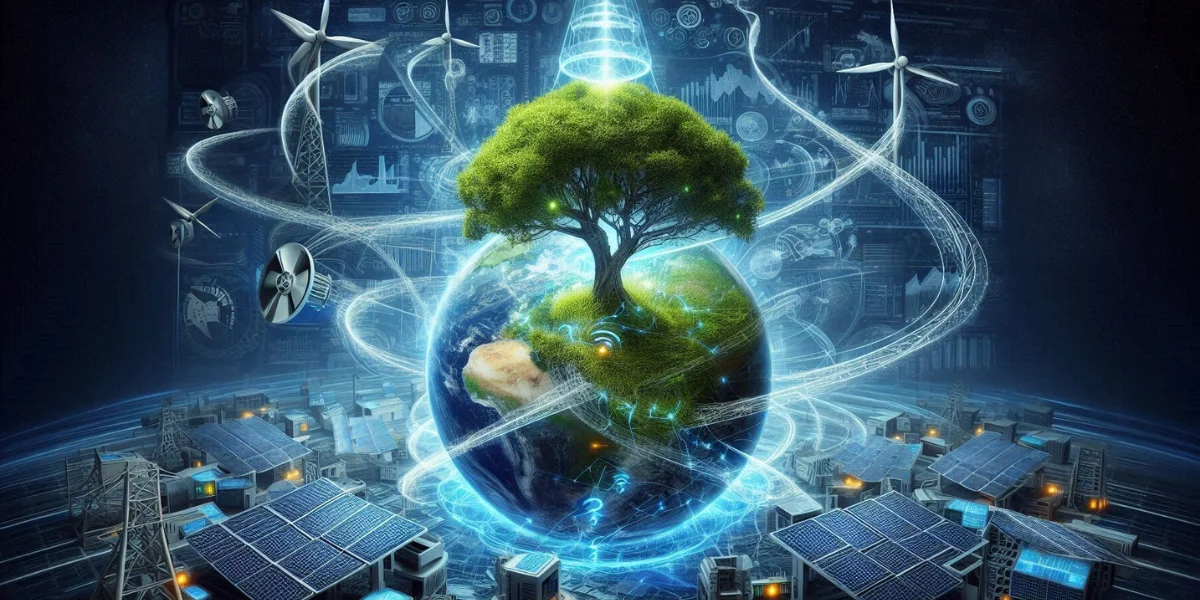The Role of AI in Shaping the Future of Wireless Electrical Energy Transmission and Its Implications for a Greener Planet
As the world increasingly embraces sustainable technologies, the pursuit of more efficient and eco-friendly methods of energy transmission has gained significant momentum. Wireless electrical energy transmission, once a concept relegated to the realm of science fiction, is now becoming a reality. At the forefront of this transformation is artificial intelligence (AI), which plays a pivotal role in optimizing wireless energy systems. AI is shaping the future of wireless electrical energy transmission, bringing profound implications for a greener planet and significantly impacting the global carbon footprint.
Wireless electrical energy transmission refers to the transfer of electrical power from a source to a device without the need for physical connectors or wires. This technology promises to revolutionize how we power everything from consumer electronics to large-scale industrial equipment. Two primary methods are under exploration: inductive coupling, which uses magnetic fields to transfer energy between coils placed at a distance, and resonant inductive coupling, a more efficient version involving tuned electromagnetic resonances between the transmitter and receiver.
AI is integral to the development and optimization of wireless energy systems in several key areas. One critical application is system optimization, where AI algorithms analyze vast amounts of data from wireless energy transmission systems to optimize the placement of transmitters and receivers, ensuring maximum efficiency and minimal energy loss. For instance, AI can adjust power levels and frequencies in real-time, adapting to changing environmental conditions and ensuring a consistent energy supply.
Another significant application is predictive maintenance. AI-driven models can foresee potential failures or inefficiencies in the transmission systems before they occur, ensuring that wireless energy systems operate at peak efficiency. This not only minimizes downtime but also reduces the need for resource-intensive repairs, enhancing the reliability of the systems and extending their lifespan. As a result, the environmental impact of manufacturing and disposing of replacement parts is significantly reduced.
AI also plays a crucial role in integrating wireless energy transmission into smart grids, which are essential for managing energy distribution sustainably and efficiently. By using AI to predict energy demand and optimize the distribution network, wireless energy can be seamlessly incorporated into the broader energy infrastructure, reducing the reliance on fossil fuel-based energy sources.
The development of wireless energy transmission, powered by AI, holds significant promise for reducing the global carbon footprint and promoting a greener planet. By enabling more efficient energy transmission, AI-driven wireless systems can decrease our dependency on traditional power grids, which often rely on fossil fuels. This transition to more sustainable energy sources, such as solar and wind, is crucial for mitigating climate change.
AI’s ability to optimize wireless energy transmission can also lead to substantial improvements in energy efficiency. By minimizing energy losses and maximizing the effective use of power, AI helps reduce the overall energy consumption required to power devices and infrastructure, leading to lower carbon emissions. Additionally, traditional wired energy systems require extensive physical infrastructure, including miles of cables and large substations, which have a significant environmental footprint. Wireless systems, guided by AI, could drastically reduce the need for such infrastructure, preserving natural habitats and reducing resource consumption.
The integration of AI into wireless energy transmission has the potential to significantly lower carbon emissions in several ways. Wireless transmission allows for the more widespread use of decentralized energy sources, such as rooftop solar panels and wind turbines. AI can optimize the flow of energy from these sources to where it is needed most, reducing reliance on centralized, carbon-intensive power plants. AI-driven systems can also monitor and predict energy usage patterns, ensuring that only the necessary amount of energy is transmitted. This precision reduces waste and contributes to a lower overall carbon footprint. As electric vehicles (EVs) become more prevalent, wireless charging stations powered by AI can enhance the convenience and efficiency of EV charging. This widespread adoption of EVs is critical for reducing greenhouse gas emissions from the transportation sector.
Artificial intelligence is playing a transformative role in the development and optimization of wireless electrical energy transmission, with profound implications for sustainability. By enhancing the efficiency of energy systems, reducing our reliance on fossil fuels, and minimizing infrastructure needs, AI-driven wireless energy transmission is poised to significantly reduce the global carbon footprint. As these technologies continue to evolve, they will be instrumental in shaping a greener, more sustainable future for our planet.

